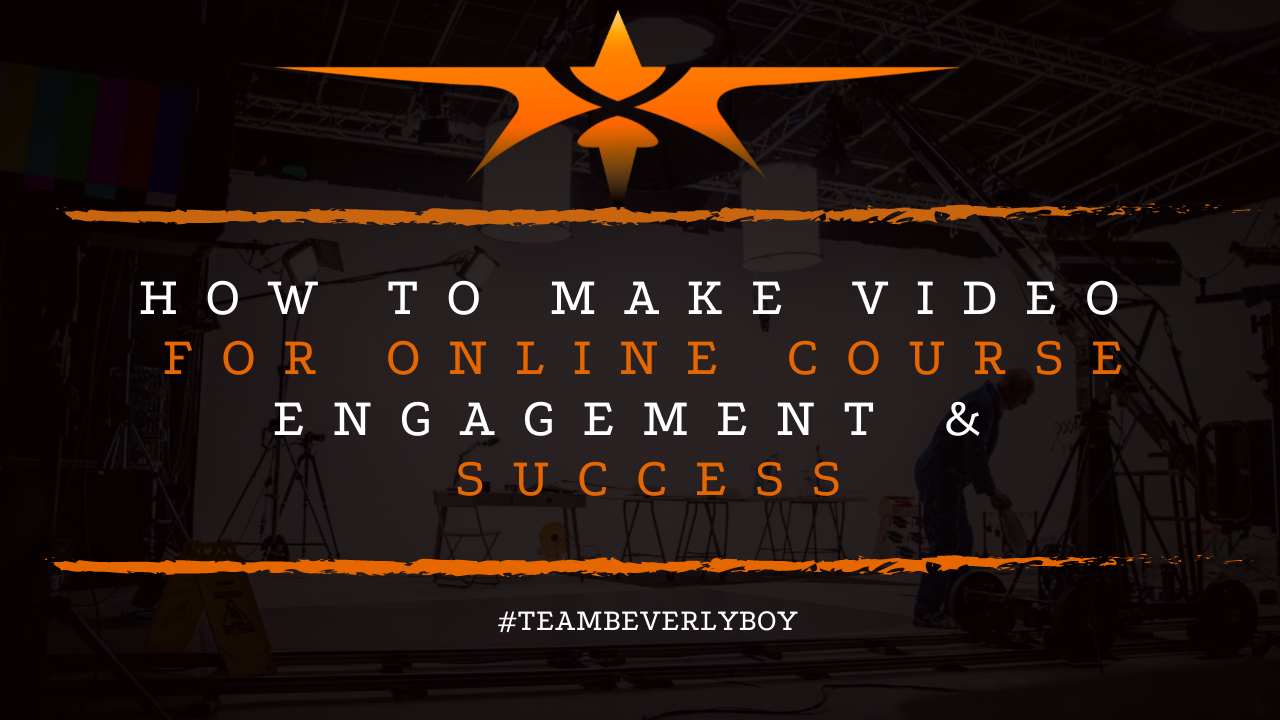
How to Make Video for Online Course Engagement & Success
When you’re creating an online course that’s as engaging as it is educationally effective, there are certainly a lot of unique steps and important processes involved. Learning how to make video for online course engagement is key to your success! But there’s a lot more to professional video creation for an online course than you might realize. Not only do you need the support of a professional film crew, but you’re going to need equipment and gear too!
If you’re new to the idea of learning how to make video for online course engagement, you’re certainly not alone! While it’s easy to initially just assume that all you have to do is add a few videos to your online course and voila, expect that the course will be engaging and fun! Unfortunately, it doesn’t technically work that way!
The videos must be produced in a professional manner. They need to have a hook that attracts viewer attention. They need to include content that the audience is going to relate with. And, most importantly, the videos have to be engaging, entertaining, and outright elevated for the specific purpose of teaching or training the content that is most relative to your course.

Start with a Clear Objective
You need a clearly defined learning objective or goal for your video content. For many content creators, this objective becomes the “title” of the video content. A great learning objective is a statement in which you clearly specify what you expect learners to achieve at the end of a lesson as a result of the activities that are included. The clearly set objective path will help your student audience to understand what the expectation is, how they can evaluate progress and take responsibility for their learning.
As an example, “With this lesson the student will be able to list each of the major bones in the hand, spelling them all correctly.” This type of objective would have a clear learning path to success: the student would need to learn each of the bones in the hand first and then they could learn individually how to spell each.
Focus on the Target Audience

In order to learn how to make video for online course engagement and success, you need to know who you’re creating video content for. This means, you need to know your audience, on a deep and personal level. You need to know what your audience wants to learn, why they want to learn it, and how they learn.
Focusing on your target audience will help you to establish content for your video that specifically targets your audience. This is your opportunity to create visuals that your audience can relate to, incorporate engagement opportunities into your video that your audience will appreciate, and provide unique lessons that your audience will gain the most insight out of when producing your video.
Be Clear About the Benefits
The best online course videos are those that clearly depict the benefits that your audience will receive from their engagement with the video content. Think back to the learning objectives, and carefully consider how video is going to help your student audience learn and meet their objectives. For instance, with the objective to learn the bones in the hand and their names as well as how to spell them, the benefits of the video include seeing visual representation of each bone and its placement in the hand as well as visualizing the spelling of each bone.
Video can also help the student by reinforcing the information that is provided throughout the learning lesson provided in the video content. Be clear about these benefits and the helpful ways that video is going to cover the topic that you’re teaching and the benefits that come from the interactive learning opportunity being provided to the student.

Consider Scenario Based Learning Initiatives
Another way that you can learn how to make video for online course engagement is to consider scenario based learning initiatives or outcomes. The use of scenarios that apply to the storytelling and unique, real-world elements involved in teaching your audience how to get the most out of the video training, is important to the success of your course.
For example, if you create a course that is focused on helping your student audience learn the bones in the hand, the scenario’s based training that you might provide could include something like having the student engage in a scenario where a bone in the hand was broken and visible on an X-ray, through scenarios-based training, the student could choose 1 path of treatment or another for the individual that has the broken hand. Only one treatment scenario is correct, though! Therefore, the student could immediately learn how the scenario that they chose impacted the outcome of their “patient.”
As you can see, learning how to make video for online course engagement is a process that requires a lot of planning and hard work. As a content creator, it’s important to think carefully about how you can incorporate the use of various engagement opportunities and interactive elements into your course content. To learn more, give Beverly Boy Productions a call!


